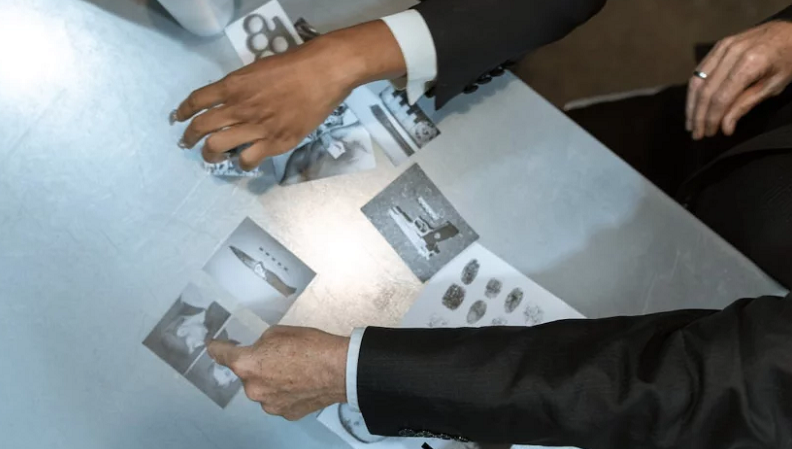
In a world increasingly fascinated by the threads that weave the fabric of our past, forensic genealogy emerges as a groundbreaking field at the confluence of science, history, and personal discovery. Unlike traditional genealogical approaches that primarily rely on historical documents and oral histories, forensic genealogy integrates cutting-edge DNA analysis and digital technology to unravel the mysteries of heritage and lineage.
Contents
Introduction to Forensic Genealogy
The quest to uncover where we come from and to understand our ancestors’ stories has captivated humanity for generations. Today, forensic genealogy stands at the forefront of this quest, offering groundbreaking tools and methodologies that intertwine the precision of science with the richness of history. This fascinating field leverages the latest advancements in DNA technology and digital research to peel back layers of the past, revealing connections and narratives that traditional genealogical methods might miss.
Forensic genealogy is not just about constructing family trees or tracing lineage. It is a profound journey into the past, utilizing the rigor of forensic science to solve historical puzzles, identify unknown individuals, and bridge generational gaps. It has revolutionized how we approach genealogical research, making it possible to solve cases that have remained mysteries for decades and to bring closure to families seeking answers about their heritage.
Definition of Forensic Genealogy
Forensic genealogy combines the investigative aspects of forensic science with the research methodologies of genealogy. It involves the use of DNA analysis, alongside historical records and modern databases, to uncover familial connections and trace ancestry. This discipline extends beyond mere hobbyist genealogy, entering the realms of legal and ethical considerations, especially in cases involving unidentified remains or legal proof of kinship.
Overview of the Role of Forensic Genealogy in Modern Research
The role of forensic genealogy in modern research cannot be overstated. Its impact spans various fields, from solving cold cases in criminal investigations to reconnecting families and identifying remains of soldiers from past conflicts. The science behind tracing ancestral footsteps has become a pivotal tool in historical research, personal discovery, and even in the legal sphere, providing evidence of relationships and descent.
The Intersection of Science, History, and Genealogy
At the heart of forensic genealogy lies the intersection of science, history, and genealogy. This confluence has opened new doors to understanding our past, using scientific methods to draw connections that were once thought to be lost to time. It emphasizes the importance of preserving historical records and embracing the advances in DNA technology, which together illuminate the stories of our ancestors in unprecedented detail.
The Evolution of Genealogical Research
Genealogical research has undergone a profound transformation over the centuries. What began as a pursuit confined to noble lineages and oral traditions has blossomed into a widely accessible endeavor, thanks to technological advancements and the democratization of data.
Traditional Genealogy vs. Forensic Genealogy
Traditional genealogy relies on historical documents, such as birth certificates, marriage licenses, and census records, to construct family trees and trace lineages. This method, while invaluable, often faces limitations due to the availability, accuracy, and completeness of historical records [1].
Forensic genealogy, on the other hand, introduces a scientific dimension to this quest. By incorporating DNA analysis and digital records into the research process, forensic genealogy breaks through barriers that have long hindered traditional genealogical research, offering more definitive connections and uncovering relationships that paper trails alone cannot reveal.
Technological Advancements in Genealogical Research
The advent of the internet and digitalization of records marked the first major leap in modern genealogical research. Suddenly, vast archives of historical documents became accessible from the comfort of one’s home. The real game-changer, however, was the introduction of DNA testing for genealogical purposes.
This not only democratized ancestry research, making it available to the general public, but also introduced a level of precision and discovery previously unimaginable. Coupled with sophisticated algorithms and expansive databases, DNA technology has enabled genealogists to uncover distant relatives, trace migration patterns, and piece together familial histories with remarkable accuracy.
The Impact of DNA Analysis on Genealogy
DNA analysis has fundamentally altered the landscape of genealogical research. It offers a unique lens through which we can view our ancestry, providing insights into ethnic backgrounds, biogeographical ancestry, and even health-related genetic markers. The ability to compare genetic material with that of others around the globe has led to the identification of familial connections across continents, transcending the limitations of traditional record-keeping.
DNA analysis has become a pivotal tool in forensic genealogy, aiding in everything from solving criminal cases to identifying the remains of soldiers lost in battle. The integration of DNA technology into genealogical research has not only expanded our understanding of family history but has also forged a deeper connection to our ancestors, bridging the gap between the past and the present with each DNA match [2].

Key Components of Forensic Genealogy
Forensic genealogy melds the meticulous nature of historical research with the precision of modern science. This hybrid field relies on several key components to unravel the complex tapestry of human ancestry and solve puzzles that span generations. Understanding these components is essential for anyone looking to exploring their family history through the lens of forensic genealogy.
DNA Testing and Analysis
The cornerstone of forensic genealogy, DNA testing, provides the molecular evidence needed to confirm biological relationships and trace lineage. This section explores the types of DNA tests utilized in genealogy and how they are interpreted to reveal ancestral connections.
Types of DNA Tests Used in Genealogy
There are three primary types of DNA tests employed in genealogical research: autosomal, mitochondrial (mtDNA), and Y-chromosome (Y-DNA) tests. Autosomal tests, which analyze DNA inherited from both parents, are the most commonly used, offering a broad overview of an individual’s ancestry and identifying relatives up to the sixth degree. Mitochondrial DNA tests trace maternal ancestry by examining the DNA passed from mothers to their children, useful for exploring direct maternal lines. Y-DNA tests, available only to males, trace paternal lineage by examining the Y chromosome passed from father to son, illuminating the direct paternal line [3].
Interpreting DNA Results for Ancestral Connections
Interpreting DNA results involves comparing genetic markers with those of others within a database to find potential relatives. This process can reveal not only distant cousins but also more immediate familial connections, helping to fill gaps in family trees. Genetic genealogists use these results to establish degrees of relationship, predict ancestral origins, and sometimes solve longstanding family mysteries. The ability to link DNA markers across global databases has turned genealogy into a worldwide collaborative effort.
Historical Records and Digital Databases
Beyond DNA, forensic genealogy extensively utilizes historical records and digital databases. These resources provide the contextual backbone needed to flesh out the stories behind DNA connections.
Importance of Historical Documents
Historical documents such as birth, marriage, and death records, along with wills, deeds, and census data, are invaluable in genealogical research. These records offer insights into ancestors’ lives, their relationships, and movements. In forensic genealogy, such documents corroborate DNA findings, providing a narrative to accompany genetic evidence.
Role of Digital Archives and Databases
The digitalization of historical records and the creation of online databases have significantly expanded the resources available to genealogists. These digital archives allow for the rapid searching and cross-referencing of records across different locations and time periods. Online genealogical platforms and databases also facilitate the sharing of information among researchers, fostering a collaborative environment that can lead to breakthroughs in tracing lineage and uncovering ancestral stories.
Ethical Considerations in Forensic Genealogy
The powerful tools of forensic genealogy come with a set of ethical considerations that must be navigated carefully.
Privacy Issues
The use of DNA testing and the sharing of genetic information raise significant privacy concerns. Genealogists must consider the implications of revealing potentially sensitive information about biological relationships and health markers.
The Use of Genetic Information in Legal Cases
Forensic genealogy often plays a role in legal cases, such as identifying remains or solving criminal cases. The use of genetic data in these contexts brings up ethical questions regarding consent and the potential for misuse of information. Genealogists and those they assist must be mindful of these ethical dimensions as they explore the depths of ancestral connections.
Forensic Genealogy in Action: Case Studies
Forensic genealogy has proven its value time and again, solving mysteries that have remained unanswered for years, decades, or even centuries. Through a combination of DNA analysis, meticulous research, and collaboration, forensic genealogists have been able to crack cold cases, reunite families, and bring closure to those seeking answers about their heritage.
Solving Cold Cases with DNA Genealogy
One of the most publicized applications of forensic genealogy is its role in solving cold cases, where traditional investigative methods have hit dead ends.
The Golden State Killer
Perhaps the most famous case cracked with the help of forensic genealogy is that of the Golden State Killer, a serial killer and rapist active in California during the 1970s and 1980s. For decades, the identity of the perpetrator remained a mystery. It wasn’t until 2018 that genealogists, using DNA evidence collected from crime scenes, were able to identify a suspect by mapping out a family tree and narrowing down potential matches. This breakthrough led to the arrest and conviction of Joseph James DeAngelo, providing long-awaited closure to victims and their families [4].
Reuniting Families and Uncovering Ancestral Stories
Forensic genealogy is not just a tool for solving crimes; it has also been instrumental in reuniting families and uncovering ancestral stories that have been lost to time.
Finding Biological Relatives
An increasing number of adoptees and individuals with unknown parentage turn to forensic genealogy to find their biological relatives. By submitting their DNA to databases and employing the services of forensic genealogists, many have been able to connect with biological family members they never knew they had. These reunions often bring a sense of closure and belonging, filling in gaps in personal histories and identities.
The Role of Forensic Genealogy in Identifying Unknown Soldiers
Forensic genealogy has also played a crucial role in military history, particularly in identifying the remains of soldiers who died in past conflicts.
The Unknown Soldier from the Korean War
A recent example includes the identification of remains of soldiers from the Korean War. Through the combined efforts of forensic genealogists and military historians, DNA from unidentified remains was matched with that of living relatives, finally bringing names to soldiers who had been listed as missing in action or unidentified. This not only honors the memory of those who served but also provides their families with the closure they had been seeking for decades.
References
[1] Bridging Disciplines to Form a New One: The Emergence of Forensic Genetic Genealogy
[2] An Introduction to Forensic Genetic Genealogy Technology
[3] United States Department Of Justice Interim Policy Forensic Genetic Genealogical DNA Analysis And Searching
[4] Forensic genetic genealogy: A profile of cases solved

